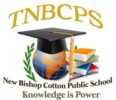In today’s interconnected globe, student neighborhoods play a critical function fit scholastic and individual experiences.

These communities are not just collections of people yet are vibrant ecological communities that promote growth, discovering, and partnership amongst students. They vary widely in type and feature, from campus-based teams to global online discussion forums, each offering distinct possibilities for engagement and development.
Whether you are stepping onto an university university for the first time or taking part in digital learning environments, understanding the framework and advantages of pupil areas can substantially improve your educational journey. This write-up explores the essence of trainee neighborhoods, discovering how they operate, the advantages they give, and the methods which they can be leveraged for individual and scholastic success.
Comprehending Trainee Neighborhoods
Trainee neighborhoods are fundamental to the academic experience, serving as both social and academic support group. At their core, these neighborhoods are teams formed naturally by students that share usual passions, objectives, or fields. They can be casual, such as study hall, or formal, like student unions and clubs.
These areas are identified by a shared identification and the cumulative pursuit of knowledge, skills, and experiences. They work as platforms for trainees to connect, collaborate, and contribute to each other’s development, extending past academic boundaries to affect individual development and neighborhood involvement.

Basically, pupil communities are microcosms of bigger societal frameworks, where leadership skills are refined, concepts are traded, and lifelong relationships are developed. The interactions within these communities mirror a diverse mix of cultural, intellectual, and social characteristics.
- Networking Opportunities: Pupil neighborhoods give a network of peers and coaches that can provide support and assistance.
- Ability Advancement: Participating in area tasks assists students develop necessary abilities such as interaction, management, and synergy.
- Resource Gain access to: These areas usually provide accessibility to scholastic sources, consisting of study products and experienced advice.
- Social Involvement: They provide a platform for social interaction, relieving the shift into new scholastic environments and assisting to fight seclusion.
Via these various features, student communities end up being integral to the all natural development of pupils, laying a foundation for future expert and individual success.
The Advantages of Participating In Pupil Areas
The advantages of joining student neighborhoods are diverse, influencing online learning both scholastic and personal balls.

On an academic degree, these neighborhoods motivate collective knowing, enabling students to take advantage of varied viewpoints and proficiency. Sharing understanding and sources within a neighborhood can cause a lot more effective understanding end results and boosted academic performance.
In addition, pupil neighborhoods offer a platform for personal growth and self-discovery. By engaging with peers from various backgrounds and disciplines, pupils obtain a more comprehensive worldview, improving their social competence and empathy. This exposure to diverse viewpoints is important in developing vital reasoning and problem-solving skills.
Additionally, energetic involvement in neighborhood activities can increase trainees’ self-confidence and self-worth. Tackling leadership roles or joining conversations and events cultivates a feeling of accomplishment and belonging, which is vital for general health and motivation.
Kinds Of Pupil Areas
Student areas been available in different types, each catering to various interests and goals. These can be broadly classified into scholastic, social, leisure, and expert areas, to name a few. Each kind gives unique systems and opportunities for trainee engagement.
- Academic Communities: These are usually centered around specific disciplines or academic interests. Instances consist of study hall, honors societies, and departmental clubs.
- Social Communities: These groups concentrate on advertising social recognition and variety, commonly arranging occasions and activities to celebrate numerous practices.
- Leisure Areas: These consist of sporting activities groups, entertainment clubs, and hobby-based teams that offer a break from academic roughness and advertise physical and psychological wellness.
- Professional Areas: These are aimed at career growth, offering networking possibilities, workshops, and mentorship programs to prepare pupils for the expert globe.
By identifying and engaging with the ideal neighborhoods, pupils can customize their university experiences to straighten with their interests and occupation goals, leading the way for a meeting academic journey.
Building a Prospering Student Area
Creating and keeping a thriving student community needs initiative and partnership from both pupils and universities. It starts with fostering an inclusive setting where all students really feel invited and valued regardless of their backgrounds.
Establishments can sustain this by offering sources and centers that encourage interaction and involvement. This consists of creating physical rooms like trainee unions and on-line systems that promote interaction and cooperation. In addition, arranging events, workshops, and workshops can further boost involvement, offering students with chances to connect and pick up from each various other.
Leadership and Trainee Involvement
Effective leadership is crucial in supporting a successful pupil community. Management roles within these areas provide pupils an opportunity to develop and show their organizational and interpersonal skills. Pupils that think these functions add dramatically to setting the tone and direction of their communities, affecting their peers positively.
Urging leadership and energetic involvement among trainees not only reinforces the area yet also equips people, preparing them for future difficulties. By fostering a society of collaboration and assistance, student areas can grow, leaving a long lasting effect on their members and the scholastic environment overall.
